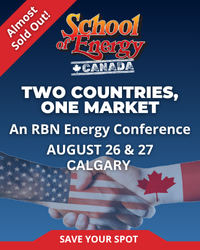Just when we thought that East Coast refining had become an oil company’s equivalent of musical chairs and all the players were headed for the exits, a consortium including Carlyle, original owners Sunoco, and JP Morgan strung together a deal to save the 330MB/d Philadelphia refinery that had been slated for the scrap heap. Can the new consortium succeed? How will they overcome the obstacles that chased the previous owners off the lot? Today we look at why they just might succeed.
Two weeks ago we reported on the imminent closure of the 330 MB/d Sunoco Philadelphia refinery and the potential fallout from that eventuality (see Don’t Let The Sun Go Down on Me – East Coast Refining Part I and Part II). In the nick of time, an innovative agreement was reached early in July (2012) between Sunoco, Carlyle Group, the State of Pennsylvania and JP Morgan to save the refinery. We will get to that agreement in a minute, but first a recap of the US East Coast fundamentals that caused 26 percent of that region’s 1.3 MMB/d refinery capacity to shut down since the summer of 2011. (In addition to the 350 MB/d HOVENSA Caribbean refinery closed in February 2012 that also supplied the East Coast).
The East Coast is virtually marooned from domestic crude supplies except for complicated rail transport schemes to reach Philadelphia from the Bakken (see Rail it on Over to Albany: Moving Bakken East). There is no crude pipeline infrastructure to link the region to Midwest or Canadian supplies. As a result, East Coast refiners rely on waterborne crude imports, primarily light sweet or light/medium sour crudes to meet more than 80 percent of their feedstock requirements. Most of these imported crudes are priced against North Sea Brent crude. Logistic complications that we have previously discussed (see for example the recent “A Bridge Too Far – When Will the WTI Discount to Brent End?”) have resulted in US domestic crude supplies (WTI) being priced at a discount to Brent of as much as $28/Bbl last year and $14.74/Bbl yesterday. Higher Brent related crude prices have jeopardized East Coast refinery margins (the spread between raw material crude prices and refined product revenues) and encouraged refiners to head for the exits.
In our blog on the threatened closure of the Sunoco Philadelphia refinery we also reviewed the refined products supply situation in the East Coast region. We discovered that a shortage in gasoline supplies caused by refinery closures could likely be met by imports, albeit at a higher price. However, supplies of diesel and heating oil, particularly into the heavily populated Northeast area are going to be harder to source. The diesel and heating oil shortage is exacerbated by tighter product specifications to reduce sulfur in diesel and - starting this month - heating oil in New York State. The required ultra low sulfur diesel (ULSD) can only be manufactured in complex refineries. (Reportedly that is another reason some of the East Coast refiners closed down - to avoid the heavy investment necessary to upgrade their facilities to meet ULSD specifications). Imports of ULSD are constrained by a shortage of suitable refining capacity outside the US and by competition for supplies in Europe (that has even tighter ULSD product specifications). US Gulf Coast refineries can meet Northeast demand but the Colonial pipeline that runs from Houston to Linden, NJ is full to capacity and movement by barge or cargo may require new vessels to be built and will be expensive.
Scared off by low margins and new product specifications requiring refinery upgrades it appeared that refiners were abandoning the US East Coast market. New investment plans announced since the refinery closures, involve logistics companies intent on playing a larger role in providing import and storage terminal facilities along the East Coast and in the Caribbean. These companies can take advantage of refined products exported from the world’s most efficient refineries to feed into the Northeast market where the lack of local refining capacity looked certain to keep prices relatively high. In the case of gasoline, new refineries in India, Asia and the Middle East could be the source of incremental supplies. For ULSD, the US Gulf was the most likely source of incremental supply.
Join Backstage Pass to Read Full Article






